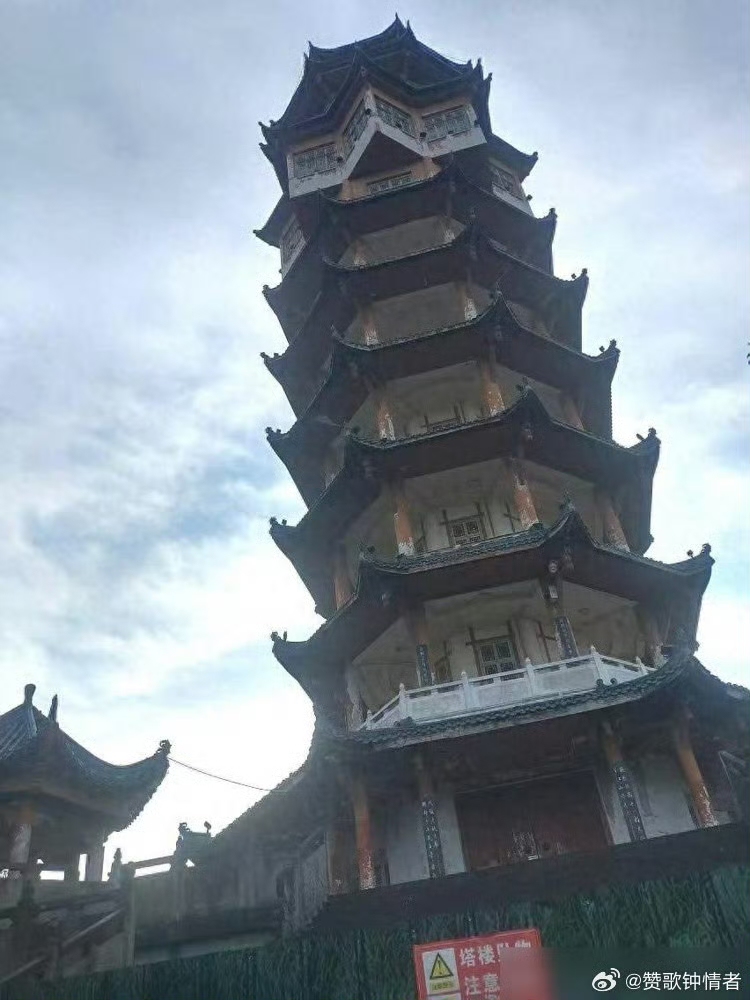ARTS / CULTURE & LEISURE
Historic tower taken down in Sichuan following earthquake aftermath, safety concerns

A photo of the Wenhua Tower Photo : Courtesy of Sina Weibo
The Wenhua Tower, a historical building in the heart of the Yingshan county, Southwest China's Sichuan Province, has recently been taken down after being one of the county's most iconic cultural landmarks for the past 18 years.
The tower was an archaized building established 2006. It was a nine-story and 56-meter-high building characterized by ancient Chinese architecture's octagonal aesthetics. The design included four pavilions that represent the county's history birth from the unification of four different ancient counties such as Langchi and Suian ever since the Song (960-1279) and Yuan (1279-1368) Dynasties.
In 2023, the Wenhua Tower was added to the conservation list of the Yingshan's first batch of historical buildings. Although it was not an architectural relic, urban planner Chen Yilan, told the Global Times that taking down the tower is a "regretful fact" since it embodies "local cultural and historical characteristics."
The Wenhua Tower was taken down because it can "no longer be maintained and reinforced," Li Xiaohong, the director of Yingshan County Housing and Urban-Rural Development Bureau, told the media.
Since 2014, the tower, a centerpiece of the local Cuiping Mountain cultural park, has been closed to the public. A ground settlement issue was causing the architecture a severe one-side leaning problem. Pillars that support the tower's main structure were cracked.
In April this year, the building was evaluated as a "Grade D dangerous structure," Chen told the Global Times that the classification refers to a "property or a building the load-bearing structure of which is likely to collapse at any moment, and poses a serious safety risk to people."
"The tower's problems emerged following the 2008 earthquake in Wenchuan and in surrounding areas in Sichuan," said Li.
"Immediate assessments and well-organized plans for conservation" might have been missed in saving the tower, architectural expert Zheng Huaxin, told the Global Times, adding that a thorough examination on the architecture should have been carried out when the structure's leaning issue was first observed.
"Adding it to the historical building list should be a mean for the locals to reinforce its condition," Zheng told the Global Times, adding that in an architect's eye, the tower "is the heart of the local community and carries great significance for the local people."



